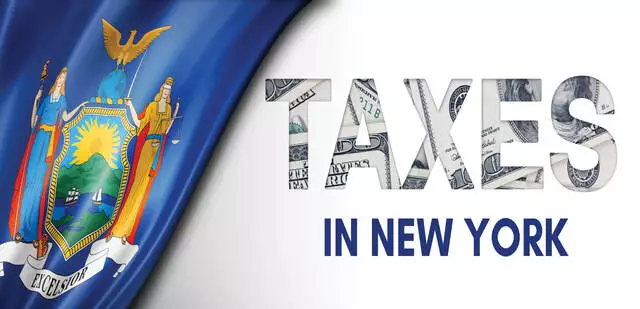
This week the DTA posted three ALJ Determinations. What recent popular culture moment involves three? How about this week’s episode of “Ted Lasso” (SPOILER ALERT!) in which he informs the team of the four key aspects of the Total Football strategy the team is adopting? The four aspects are conditioning, versatility, awareness, and a fourth to be determined. So, really there are only three, at least for now. In any case, our theme for this week’s TiNY is borrowed from Coach Ted.
Matter of Sarmiento, Judge Russo, April 20, 2023; Div’s Rep. Karry Culihan, Esq.; Pet’s Rep. Glenn Ripa, Esq.; Suspension of Driver’s License under Tax Law § 171-v. OK, you need to rely on your conditioning on this one because there is some procedural history here, and one expects there is an exception yet to come. In short, this has been a long haul that is likely to get longer.
In a Tribunal Decision dated December 20, 2019, Petitioner’s case challenging the merits of a sales tax responsible officer notice (Notice 1) was dismissed on timeliness grounds. Notice 1 matured into a fixed and final tax liability, and ultimately that liability formed the basis for the issuance of a notice of proposed driver’s license suspension (Notice 2). Petitioner filed a BCMS request challenging the validity of Notice 2 on the basis that he didn’t owe the tax asserted on Notice 1. BCMS issued an order sustaining Notice 2, and Petitioner filed a petition challenging the BCMS Order arguing that he never owed the tax shown on Notice 1 in the first place.
Judge Russo granted summary determination in favor of the Division and sustained Notice 2. The Judge observed that there are eight specifically-enumerated defenses to a notice of proposed driver’s license suspension, and “I didn’t really owe the tax!” is not one of the specifically-enumerated defenses. Since that was the only defense offered by Petitioner, the Notice was sustained. And sure, once a liability becomes fixed and final, the license suspension process should not be used to allow another challenge to the validity of the tax liability. After all, Petitioner had the opportunity to challenge the liability previously and failed to do so in a timely fashion. Still, one could feel a little sorry for Petitioner. If his allegations are true, he was not a responsible officer of (and had nothing to do with) the scofflaw business during the years at issue in Notice 1, and thus should not be liable for the taxes owed by that business. Of course, Petitioner can pay the liability, avoid license suspension and file a refund claim to get his money back, but he needs to come up with $87,000 to do that.
Matter of Kofman, Judge Law, April 20, 2023; Div’s Rep. Peter Ostwald, Esq.; Pet’s Rep. pro se; Article 22. Petitioners sold New York Real property for $6,750,000 in 2013. The Division sent Petitioners correspondence on January 31, 2015, notifying Petitioners that they were under audit and indicating the Division never received a 2013 income tax return from Petitioners. On March 15, 2015, Petitioners filed their 2013 income tax return reporting a capital gain of $195,776 on the sale of the real property, and claiming $637,560 of home mortgage interest as an itemized deduction. The return listed Petitioners home as being located in New York City. On April 15, 2015, the Division’s auditor issued an information and document request (“IDR”) requesting a bunch of information, most of which seemed to be relevant to the issue of whether Petitioners were New York City residents in 2013.
Following its audit, the Division issued a Notice of Deficiency to Petitioners asserting $613,071 in additional tax, plus penalties and interest. The additional tax liability asserted was a study in versatility premised on several issues: 1. a disallowance of the estimated costs of improvements to the house from the basis of the real property; 2. an inclusion in income of $65,739 for cancellation of indebtedness (based on a Form 1099-C issued to Petitioners by Chase Bank); and 3. the conclusion that Petitioners were New York City residents at the time of the sale of the real property. In addition, although an adjustment to itemized deductions was not listed as a basis for the asserted liability in the Findings of Fact, Judge Law ruled in his Conclusions of Law that it was appropriate to reduce Petitioners’ itemized deductions by 50% since the evidence suggests their income in 2013 exceeded $1 million.
Regarding the cost of improvement issue, the Judge noted that evidence of the claimed costs was limited to the testimony of Petitioners and an unsworn letter from a contractor in which the contractor estimated that Petitioners spent between $6.5 million and $6.8 million on improvements to the property. In his determination sustaining the Notice, Judge Law found that Petitioners had the duty to prove the claimed costs for improvements to the property, and failed to do so. The unsworn contractor letter was “accorded no evidentiary value” because it “could have been written by anyone.” And even though Petitioners also testified during the hearing that they had made extensive renovations to the house and the Division likely did not have any contrary evidence (none was mentioned in the determination), the failure to have any documentation of the cost of the improvements resulted in Judge Law finding that those costs were not sufficiently substantiated.
Petitioners claimed that the cancellation of debt income was excludable because they were insolvent at the time of the debt cancellation. But, once again, other than Petitioners’ statements, there was no proof of insolvency.
Matter of Alkobary, Judge Behuniak, April 20, 2023; Div’s Rep. Brian Evans, Esq.; Pet’s Rep. Kenneth Frenkel, Esq.; Article 20. It’s a timy. And, if you’ve honed your awareness, you’ll recognize that this case is listed last coincident with my general view of timies.
Judge Behuniak granted the Division’s motion to dismiss on timeliness grounds. The Division presented evidence sufficient to prove that it mailed the Notice to Petitioner’s last known address on March 11, 2021. The petition was mailed a year later, well beyond the 90-day time limit for filing a petition. Although Petitioner alleged the Notice was never received, that bare assertion was not enough to overcome the presumption of receipt that attaches once proof of proper mailing has been established.

